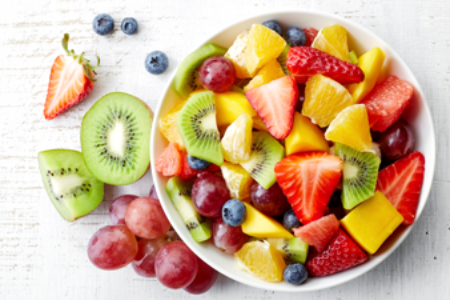
The Standard American Diet (SAD) is a diet based on processed foods and animal bi-products, therefor, it is a diet lacking in fiber. And yes, this is incredibly sad. To make things worse, fad diets have been antagonizing carbohydrates for some time now. While a high-carb diet is not necessarily high in fiber, since it could be based on processed foods where the fiber is removed, a low-carb diet is a low-fiber diet.
Fiber is only present in plants, so we need to eat whole plants to get the fiber we need. Unfortunately, over 90% of Americans are not getting nearly enough. This is why constipation is so common in our society! But the consequences go far beyond that. Without this top nutrient, we are starving our good gut bacteria. At the same time, a diet rich in animal-based foods, processed foods, and processed sugars feeds bacteria that often leads to inflammation and multiple health issues including heart disease, autoimmune diseases, and cancer.
As we start to add more of this neglected nutrient into our diet, the first thing we notice is that our constipation is gone and our digestive system works like clockwork. This is great! But it is just one among many other benefits that we’ll enjoy.
Short-Chain Fatty Acids
Most benefits come indirectly through short-chain fatty acids (SCFAs), a bi-product of the interaction between our gut bacteria and fiber. See, fiber is a prebiotic that feeds the good little guys in our gut or probiotics. SCFAs are what we get from this interaction or, simply put, the postbiotics. You will be amazed when you learn how much of our health depends on them! SCFAs have a strong influence in our heart, our brain, our immunity, our muscles metabolism and recovery, and more. While bad bacteria and their compounds lead to disease, good bacteria and SCFAs help prevent it.
Explore our interactive page below to learn more fascinating details.
Top Whole-Food, Plant-Based Sources of Fiber
If you’re eating whole plants, you’re eating fiber. In fact, one of the top problems with food processing is the removal of fiber. All fiber is not the same, though, so be sure to eat a diversity of foods from the top groups below to ensure you’re getting all the varieties that your gut flora needs to thrive.
Click on each food group’s picture to visit its page with links to specific foods’ interactive pages. Each of these pages offers a personalized calculator that shows you the food’s top nutrients and how much of your RDA can be found in one portion. Plus, we share useful tips, information on how these foods support your body, and some interesting facts.
Fiber Personalized Calculator
This calculator is based on the U.S. Department of Agriculture’s Dietary Guidelines for Americans 2020-2025. Their recommendations are based on levels that reduce the risk of coronary heart disease. However, there are studies that strongly recommend aiming at 50 g per day to significantly reduce the risk of colon cancer, and to better support our gut microbiota which in return supports other health areas including diabetes prevention, brain health, and immunity.
Please think of your calculator results as your minimum requirement. 90% of women and 97% of men in the U.S. are not even reaching these amounts! Keep adding whole-food plants into your diet until most of your diet (if not all) is whole-foods, plant-based. At this point, you will easily be getting 50 g a day or more.
Terminology:
- Daily Value (DV): The recommended amount of nutrients to consume each day for individuals who are 4 years old or older.
- Recommended Daily Allowance (RDA): The recommended amount of nutrients to consume each day according to the individual’s age, gender, and whether a woman is pregnant or breastfeeding.
- Upper Intake Level (UL): The highest amount of nutrient intake that will not pose adverse health effects on most individuals.
How Our Body Uses Fiber
Fiber is a key nutrient for our digestion, but it also plays an important role in other health areas through short-chain fatty acids (SCFAs) produced by our good gut bacteria. Hover over each pointer below for more details. Click on the pointer to visit the specific body part’s interactive page to discover what other nutrients support it, the best sources to find them, and other interesting facts.
Important Things to Know About Fiber
Comparison of Fiber Sources
You may be wondering about other potential sources of fiber aside from whole-food, plant-based sources. Below, we make a quick and simple comparison between the three choices you could be considering: whole food plants, supplements, or animal-based products. For fiber, it’s a no-brainer!
















